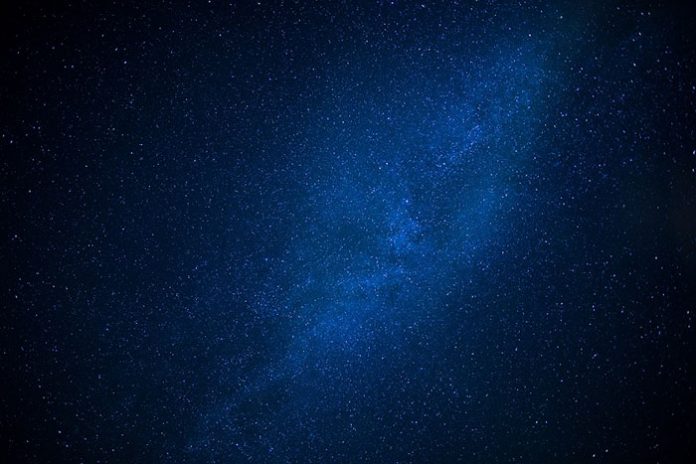Astronomen können von weit entfernten Galaxien normalerweise durch hochenergetische Strahlung wie Röntgenstrahlen hören. Es ist äußerst ungewöhnlich, relativ energiearme UV-Strahlung von alten Galaxien wie AUDs01 zu erhalten. Solche niederenergetischen Photonen werden normalerweise unterwegs oder von der Erdatmosphäre absorbiert. Hubble Space Telescope (HST) has been very helpful in avoiding effects of earth’s atmosphere but even HST could not detect signal from this Galaxis probably due to noise.
Nun, die ultraviolette Bildgebung Teleskop on Indian satellite AstroSat has detected extreme UV light for the first time from the Galaxis AUDFs01 situated 9.3 billion light-years away from Earth which is remarkable1.
Heute können wir in die Universum und sehen, Sterne und Galaxien entstand vor Milliarden von Jahren, weil das intergalaktische Medium für Licht transparent ist. Dies war in den ersten hundert Millionen Jahren nach dem Urknall nicht der Fall. Der Zeitraum, den Astronomen als kosmisches dunkles Zeitalter bezeichnen, war die Zeit, in der das intergalaktische Medium mit neutralem Gas gefüllt war, das hochenergetische Photonen absorbierte und erzeugte Universum opaque to light waves. It was the period starting from the time when cosmic microwave background radiation emitted up to the time when first Sterne und Galaxis were formed. The Universum then entered into what is called the Epoch of Reionization, when the dark matter started to collapse due to its own gravity and eventually started forming the Sterne and the galaxies.
Kosmologen sprechen von der Rotverschiebung z, um eine kosmische Epoche zu bezeichnen. Der gegenwärtige Zeitpunkt wird mit z=0 bezeichnet und je höher der z-Wert ist, desto näher liegt er am Urknall. Beispielsweise bezeichnet z=9 einen Zeitpunkt, an dem Universum was 500 million-year-old and z=19 when it was only 200 million-year-old, near Dark Age. At higher z values (z ≥ 10) it becomes extremely difficult to detect any object (star or Galaxis) due to sharp decline in inter galactic medium transmission. Scientists have been able to observe quasars and the galaxies up to z approximately equal to 6.5. Theories suggest that the Sterne and the galaxies could have been formed much earlier at say higher z values and with advancement in technology we should be able to detect fainter objects at higher z values also [2]. However, most of the detection of galaxies are limited to approximately z=3.5 and are detected in the X-rays range. It is extremely difficult to detect the stars and galaxies in the extreme ultraviolet as it is heavily absorbed in the atmosphere.
Group of scientists led by Saha at Inter-University Centre for Astronomy and Astrophysics (IUCAA) were able to achieve this unique feat using Ultraviolet Imaging Telescope (UVIT) aboard the Indian satellite AstroSat . They observed the Galaxis AUDFs01 located in the Hubble Extreme Deep field using extreme-UV light from the Galaxis. It could be possible because the background noise in the UVIT detector was much less than the ones on HST. The discovery is important as it opens up a new domain for detection of far off galaxies in the EUV range.
***
References:
- Saha, K., Tandon, S.N., Simmonds, C., Verhamme, A., Paswan A., et al. 2020. AstroSat detection of Lyman continuum emission from a z = 1.42 Galaxis. Nat Astron (2020). DOI: https://doi.org/10.1038/s41550-020-1173-5
- Miralda-Escudé, J., 2003. Das dunkle Zeitalter des Universums. Wissenschaft, 300(5627), S.1904-1909. DOI: https://doi.org/10.1126/science.1085325






































